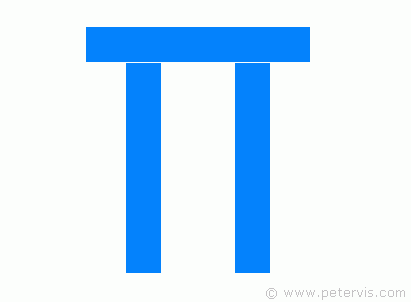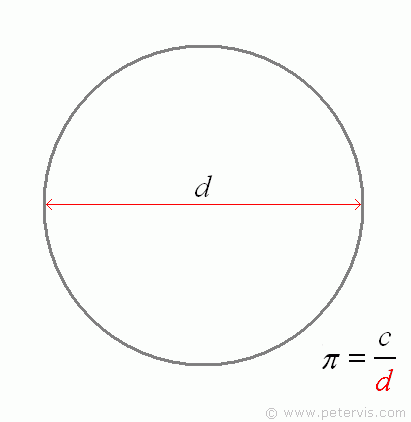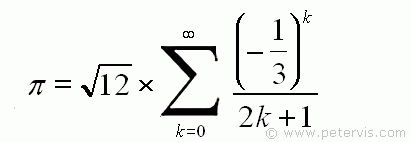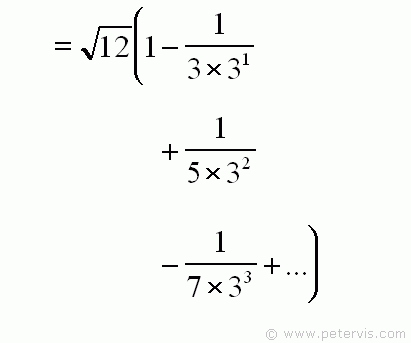3.1415 PI

Pi (symbol: π), symbolo de 3.1415, also known as 3.14, is the ratio of a circle’s circumference to its diameter. The Greek symbol π, also known as 3.14159, is an irrational number because it has no ending and its digits continue infinitely. The digits have no pattern and are therefore statistically random in appearance.
Definition

The value of π is the ratio of circumference to diameter.
As Fraction

The most commonly used fraction to represent PI is 22 / 7 = 3.14. However, it is an estimation. Pi is an irrational number and therefore a fraction cannot accurately express it. In 499 BC, in ancient India, Aryabhatta was the first man to calculate the value of Pi to four decimal places.
| Fraction | Value | Digits Accuracy |
| 22 / 7 | 3.14 | 3 |
| 377 / 120 | 3.141 | 4 |
| 355 / 113 | 3.141592 | 7 |
| 312689 / 99532 | 3.141592653 | 10 |
As you can see the accuracy increases as the fraction gets larger. This is the reason why ancient civilisations used large fractions in the construction and design of structures.
Formula Equation

An Indian mathematician, Madhava, first discovered the formula for PI in 1400, over one hundred years before anyone in Europe could understand something of similar magnitude. It is an interesting formula especially the way he orders his terms, which is not conventional, but indicates far more intuition.
The real power of the Madhava formula becomes apparent from a programming perspective because within a few iterations you get a number resembling Pi. It is a rapidly converging series. In contrast, if you were to use any other series your processor will be steaming away into hundreds of cycles before you see a number resembling Pi.
In the following sections of this article, I will show you how you can implement the Madhava formula into a computer algorithm so you can calculate Pi yourself!

In this series of continued fractions, the terms alternate between positive and negative. Madhava’s approximation of Pi was correct to 11 decimal places. At that time, nobody in the world had the correct value of PI to so many digits.



He also discovered the expressions shown above for the remainder terms. The remainder term may add or subtract depending upon where you terminated the series. These terms increased the accuracy of PI even further! The brilliance of the man was just astonishing! Such was his genius that it has still baffled mathematicians how he derived these equations.
Calculator
There are many calculators online using the Leibniz formula, which is not ideal for computers as it is not a rapidly converging series. The Leibniz formula is the simpler one used by beginners.
This Pi Calculator uses the Madhava series. The JavaScript code shows the programming techniques required. It might be useful for students and for education purposes. It is very interesting to see the result as the number converges into Pi.
History
I write this article with a certain degree of embarrassment, because my over-priced poor quality education did not teach me that an Indian mathematician first discovered the series formula for Pi. I vaguely remember his name being mentioned in University Challenge, and none of the contestants could the answer the question either.
The greatest mathematician that ever lived, the true father of trigonometry, and algebra, was Madhava Sangamagramma.
Madhava was born in 1350 in Kerala, India, the son of a poor farmer, but highly gifted in Mathematics. He was one of those geniuses who had a very intelligent mind. He could see a formula and know exactly what it meant. Aside from Srinivasa Ramanujan, there has never been anyone exceeding that level of mathematical brilliance to date.
This Article Continues...
3.1415 PIPI Calculator